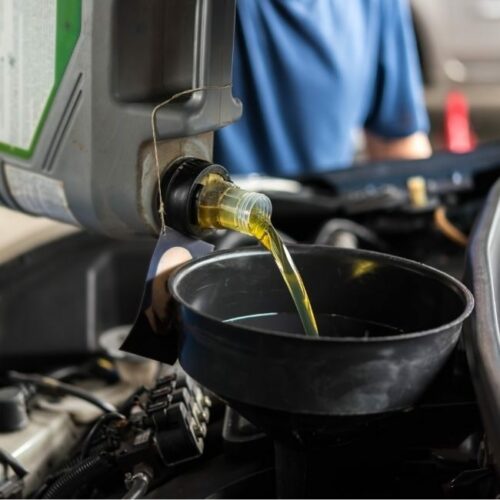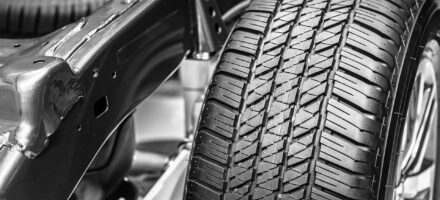
Making sure that your engine and your tyres are in tip-top condition are key to essential car maintenance and can help to extend the life of your vehicle. Learning how to check your tyre pressure and keep your engine healthy by measuring and changing your oil regularly can mean you get more trouble-free miles from your car and that when your vehicle does need a service, it‘s less likely to cost you a lot of money in expensive repairs.
More than a quarter of tyres on the UK roads are considered to be so defective that they are classed as illegal. If you are stopped for having defective tyres, you can be charged £2,500 per defective tyre and you can also be given 3 penalty points - again, per defective tyre. Essentially this means that you can be stopped just once and end up being banned from driving, and facing a £10,000 fine.
One of the best ways to ensure that your car tyres last as long as possible is to keep them at the correct pressure for your vehicle.
Do I Need any Tools?
Most petrol stations and supermarket garages will have a digital air dispenser which you can usually use for free to check and top up your tyre pressure. If you're planning on going to a digital machine, all you'll need is a Haynes or Owner's manual for your vehicle which can tell you the pressure that you're aiming for.
If you are doing the check at home, or away from a garage, then you will need a pressure gauge - hand-held ones are pretty cheap and can be bought from car accessory stores.
How do I do a Tyre Pressure Check?
- Find out what the tyre pressure should be and set the air machine to the right PSI/BAR (check the machine or the instructions for more information on how to do this)
- Clip the air hose onto the tyre tube
- The machine will inflate your tyre and when it reaches the pressure you have set the machine to, it will stop
- Do this on all four of your tyres
Checking your Oil
As well as checking tyre pressure, one of the most important things you can do as a car owner is to check your engine oil regularly - but how often do most of us actually do it?
It's estimated that 1 in every 3 cars has less oil than it needs to run efficiently, and if it drops too low then the engine can be irreversibly damaged, and may even need to be replaced. To avoid this you should check the oil levels in your engine once a week and check under the car to make sure that there aren't any oil leaks or spills coming from the bonnet.
How to Read your Oil

- First of all, make sure that the car is on a flat surface. If you park on a hill or on a slant then you won’t get a true reading
- Make sure the bonnet is secured
- Locate the dipstick - this is usually made of yellow or red plastic and you should see it pretty easily
- Once you've found the dipstick, pull it out slowly and wipe on some kitchen roll
- Put the dipstick back in the tube then pull it back out. By looking, you should be able to see where the oil is in relation to the min/max markings
I need to Fill up the Oil. What do I do?
- Locate and remove the filler cap. Check the manual if you aren't sure which one it is - don't guess
- Add a little oil and wait for a moment. Then check the oil level again as you did before - wiping on the kitchen roll first then putting the dipstick back in and taking it out again for a reading
- Keep adding oil until it's near the max mark. Remember it takes a few moments to filter through, so don't be too enthusiastic with your pouring - top it up little by little and take your time
- When you're happy it's full, put the dipstick back in the tube and replace the filler cap
- Wipe up any spills
Changing your Own Oil
If your car needs an oil change, doing it yourself will keep the cost down and so help the motoring budget. It's easy to do by following these simple steps:
- Drain the existing oil
Make sure the engine is cool and turned off. Find out where the drain plug is, place a container underneath it and remove the plug (you might need an oil filter wrench to carry this out). When the oil stops coming out, put the plug back in.
- Replace the oil filter
Move the container underneath the oil filter and use the wrench to remove the filter. Put a thin coat of the new oil over the filter, refit it and make sure you follow the instructions in the manual about how to secure it.
- Add new oil
Find the oil filter cap and pour in the new oil. check the manual to make sure you are using the correct amount. Then replace the cap.
- Check your results
Start the engine. Look under the car and make sure no oil has come out. Turn off the engine and wait for the oil to settle, then check the oil level with the dipstick and make sure that it is full enough.
Disclaimer: The information in the article is for general purpose information only and should not be constituted as legal advice. This article has been produced by a third party and Jardine Motors does not take any responsibility for the completeness, accuracy, or reliability with respect to the website or the information provided. Article last updated March 2016.



